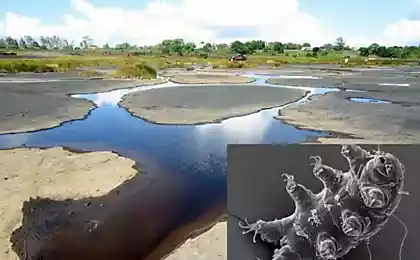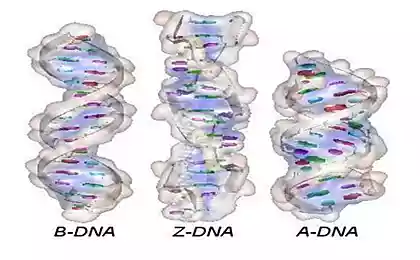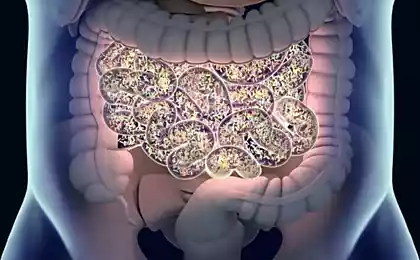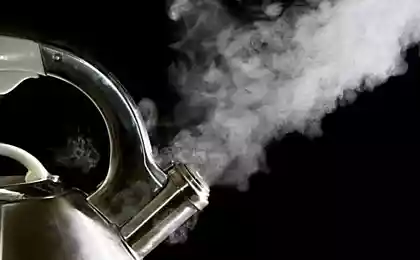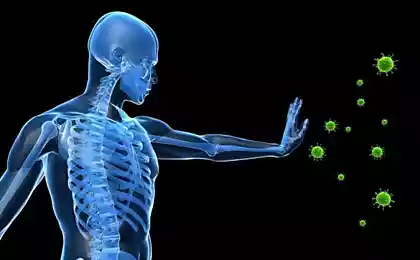686
Everything you need to know about bacteria
Seventy eight million forty four thousand three hundred seventy eight
photo: www.dailymail.co.uk
At this moment, man, when you read these lines, you benefit from the work of bacteria. From the oxygen we inhale, to nutrients that remove the stomach of food, we have bacteria to thank for the prosperity on this planet. In the body of microorganisms, including bacteria, more than our own cells about ten times. In fact, we are more microbes than humans.
Only recently have we begun to understand microscopic organisms and their impact on our planet and health, but history shows that centuries ago our ancestors already used the power of bacteria fermenting food and drinks (who ever heard of bread and beer?).
In the 17th century we began to study the bacteria already in our bodies, in close connection with us — in the mouth. Curiosity Antoni van Leeuwenhoek made it possible to detect bacteria when he studied the plaque between his own teeth. Poetically van Leeuwenhoek described bacteria, denoting a bacterial colony on their teeth as "a little white matter, similar to frozen dough". Placing the sample under a microscope, van Leeuwenhoek saw microorganisms move. So they are alive!
You should know that bacteria played a crucial role for the Earth to become a key moment in creating breathable air and the biological wealth of the planet that we call home.
In this article we will provide you with a General picture about these tiny but very important organisms. We examine the good, the bad and the totally bizarre ways in which bacteria form the history of man and the environment. First, consider what the bacteria are different from other types of life.
The basics бактерий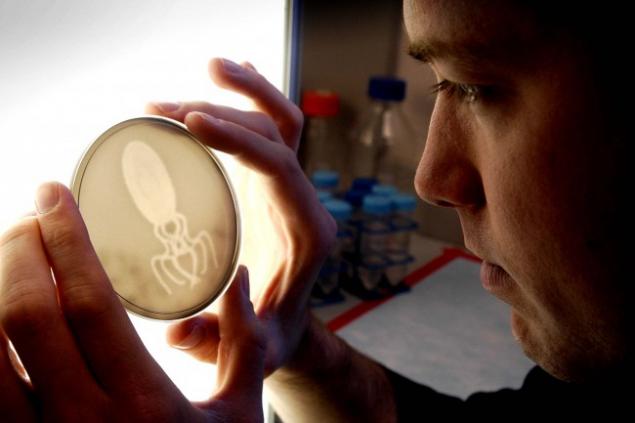
Well, if the bacteria invisible to the naked eye, how can we know so much about them?
Scientists have developed powerful microscopes to look at bacteria — they range in size from one to several microns (millionth of meter) and find out how they compare with other forms of life, plants, animals, viruses and fungi.
As you may know, cells are the building blocks of life, consist of them and tissue of our body, and the tree that grows outside the window. People, plants and animals possess cells with genetic information enclosed in a membrane called the nucleus. These types of cells called eukaryotic, have specialized organelles, each of which performs a unique job of helping the cell to work.
Bacteria, however, do not have nuclei, and their genetic material (DNA) floats freely within the cell. These microscopic cells don't have organelles and they have other methods of reproduction and transmission of genetic material. Bacteria are considered prokaryotic cells.
The main categories of bacteria scientists estimate the following parameters:
The bacteria survive in the environment with oxygen or without
Their shape: Bacillus (bacillus), round (cocci) or spiral (spirillum)
Whether the bacteria are gram-negative or gram-positive, that is, whether the outer protective membrane that prevents staining of the inside of the cell
As bacteria move and explore the environment (many bacteria have flagella, tiny whip-like structures that allow them to move in the environment)
Microbiology is the study of all types of microbes, including bacteria, archaea, fungi, viruses and protozoa — helps to distinguish the bacteria from their microbial brethren.
Similar to bacteria, prokaryotes, are now classified as archaea, once was together with the bacteria, but when scientists learned more about them, they gave bacteria and archaea own categories.
Microbial nutrition (and miasma)
Like people, animals and plants, bacteria need food to survive.
Some bacteria are autotrophs — use basic resources like sunlight, water and chemical substances from the environment to create food (think of the cyanobacteria that turned sunlight into oxygen for 2.5 million years). Other bacteria scientists are called heterotrophs because they obtain energy from existing organic matter as food (for example, dead leaves on the forest floor).
The truth is that what may be delicious for bacteria, we would be disgusted. They have evolved to absorb all types of products, from oil spills and by-products of nuclear fission to human waste and decomposition products.
But the tendency of bacteria to a specific food source can benefit society. For example, specialists in the art of Italy addressed to the bacteria that can eat the excess layers of salt and glue, reducing the longevity of priceless pieces of art. The ability of bacteria to process organic matter is also very useful for the Earth, as in soil and in water.
Proceeding from everyday experience you are familiar with the smell, which is caused by bacteria, absorbing the contents of your trash, recycling food scraps and emitting their own gaseous by-products. However, it goes beyond this. You can also blame bacteria that they cause these awkward moments, when you yourself emit gases.
One big семья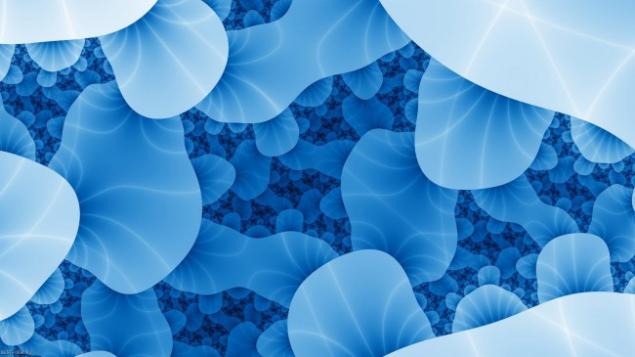
The bacteria grow and form colonies when I get a chance. If food and environmental conditions are favorable, they multiply and form sticky clusters called biofilms, to survive on different surfaces — from rocks to the teeth of your mouth.
The biofilm has its pros and cons. On the one hand, they are natural objects mutually beneficial (mutualism). On the other hand — they can be a serious threat. For example, physicians who treat patients with medical implants and devices concerned about biofilms, since they represent a sort of real estate for bacteria. After colonization of the biofilm can produce by-products that are toxic — and sometimes fatal — to humans.
Like people in cities, cells in the biofilm communicate with each other, exchange information about food and potential danger. But instead of having to call neighbors on the phone, the bacteria send notes with the help of chemical substances.
Also, the bacteria are not afraid to live independently. Some species have developed interesting ways to survive in the harsh conditions. When there is no food, and conditions become unbearable, bacteria can themselves, creating a hard shell — endospore, which places the cell in a dormant state and keeps the genetic material of bacteria.
Scientists find bacteria in these time capsules that had been stored and 100, and even 250 million years. This suggests that the bacteria can be stored for a long time.
Now that we know what possibilities are provided by colonies of bacteria, let's see how they get there — by dividing and reproduction.
Reproduction бактерий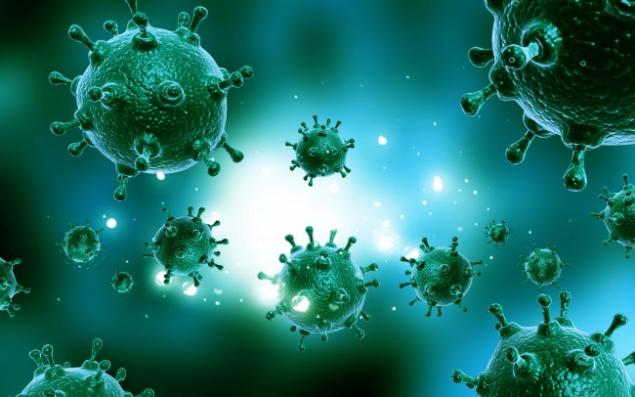
As bacteria create colonies? Like other forms of life on Earth, the bacteria need to smokerooms to survive. Other organisms do this by sexual reproduction, but not bacteria. But first, let's discuss why diversity is good.
Life is natural selection, well, or selective forces in a given environment allow one type to thrive and reproduce more than others. You may remember that genes are the mechanism that instructs the cell what to do and determines what color are your hair and eyes. You get genes from their parents. Sexual reproduction leads to mutations, or random changes in DNA that creates diversity. The more genetic diversity, the greater the chance that the organism will be able to adapt to the constraints of the environment.
For bacteria reproduction is not dependent on meeting with the correct microbe; they simply copy their own DNA and divide into two identical cells. This process, called binary fission, occurs when one bacterium divides into two, copying DNA and passing it to both parts of the divided cells.
Because ultimately born cell will be identical to the one from which it was born, this method of reproduction is not the best to create a diverse gene pool. How do bacteria acquire new genes?
It turns out that bacteria use a clever trick: horizontal gene transfer, or exchange of genetic material without reproduction. There are several methods that use bacteria for this purpose. One method involves the collection of genetic material from the environment outside the cells of other microbes and bacteria (via molecules called plasmids). Another way viruses that use bacteria as a home. Infecting new bacteria, viruses leave the previous genetic material bacteria in new.
The exchange of genetic material gives bacteria the flexibility to adapt, and they adapt, if you feel stressful changes in the environment, such as lack of food or chemical changes.
Understanding how bacteria adapt, it is extremely important for combat and the development of antibiotics in medicine. Bacteria can exchange genetic material so frequently that sometimes a treatment that worked before no longer works.
Neither high mountains nor large глубины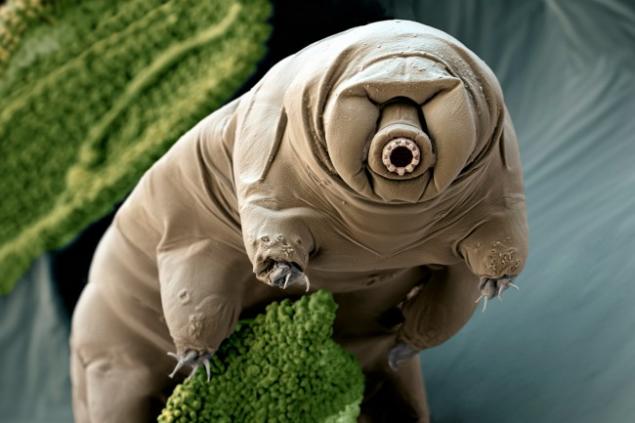
If you wonder "where are bacteria?", easier to ask "where are bacteria?".
Bacteria are found almost everywhere on Earth. It is impossible to imagine the amount of bacteria on the planet at the same time, but according to some estimates their number is (bacteria and archaea together) 5 octillion is a number with 27 zeros.
Classification of bacterial species is extremely difficult, for obvious reasons. Now there are about 30 000 species officially identified, but the knowledge base is constantly growing, and there are opinions that we have before us only the tip of the iceberg of all types of bacteria.
The truth is that bacteria have been around for a very long time. They have created some of the oldest fossils, which are 3.5 billion years old. The research results suggest that cyanobacteria began creating oxygen about 2.3—2.5 billion years ago in the oceans, filling the atmosphere with oxygen that we breathe to this day.
Bacteria can survive in air, water, soil, ice, heat, plants, in the gut, on skin — everywhere.
Some bacteria are extremophiles, meaning they can withstand extreme conditions, when either very hot or too cold, or lacking the nutrients and chemicals which we normally associate with life. The researchers found that bacteria in the Mariana trench, the deepest point on the Earth at the bottom of the Pacific ocean, near hydrothermal vents in water and in ice. There are also bacteria that like high temperatures such as, for example, paint the opalescent pool in Yellowstone national Park.
Bad (for us)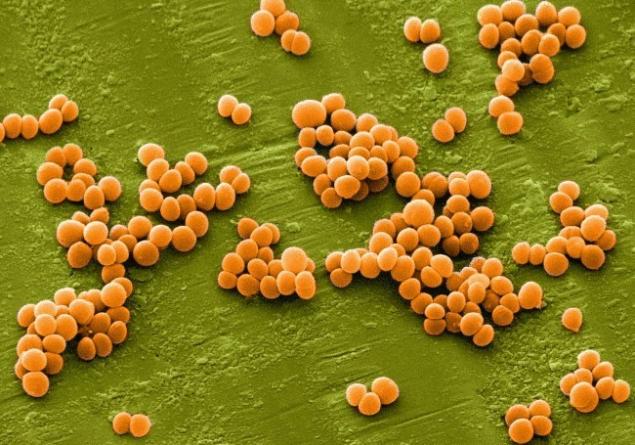
Although bacteria make an important contribution to human health and the planet, they have a dark side. Some bacteria can be pathogenic, i.e. cause disease and illness.
Throughout the history of mankind, some bacteria (understandably so) got a bad reputation, causing panic and hysteria. Take, for example, the plague. The bacterium that causes plague — the plague Bacillus Yersinia pestis not only killed over 100 million people, but also may have contributed to the collapse of the Roman Empire. Before the advent of antibiotics, drugs that help fight bacterial infections, they were very difficult to stop.
Even today, these pathogenic bacteria is seriously scaring us. Thanks to the development of resistance to antibiotics, the bacteria that cause anthrax, pneumonia, meningitis, cholera, salmonellosis, sore throat and other diseases that still remain with us, always a hazard for us.
That is especially true for Staphylococcus aureus, the bacteria responsible for staph infection. This "sorbetiere" leads to numerous problems in the clinics, because patients very often pick up the infection during the introduction of medical implants and catheters.
We talked about natural selection and that some bacteria produce a variety of genes that help them cope with environmental conditions. If you have an infection, and some bacteria in your body different from other antibiotics can affect a large proportion of bacteria. But those bacteria that survive develop resistance to the medication and will remain, waiting for the next chance. Therefore, doctors recommend to complete the course of antibiotics until the end, and generally refer to them as little as possible, only in extreme cases.
Biological weapons — another frightening aspect of this conversation. Bacteria can be used as a weapon in some cases, in particular, anthrax and used at one time. In addition, not only people suffer from bacteria. Certain species — Halomonas titanicae — showed an appetite to the sunken ocean liner Titanic, corroding metal historic ship.
Of course, bacteria can not only bring harm.
Heroic bacteriemia explore the good side of bacteria. In the end, these microbes have given us such tasty foods like cheese, beer, sourdough, and other fermented items. They also improve human health and are used in medicine.
Individual bacteria can be thanked for shaping human evolution. Science gathers more data about the microflora — the microorganisms that live in our bodies especially in the digestive system and intestines. Research shows that bacteria, the new genetic material and diversity that they bring to our bodies, enable people to adapt to new food sources, not previously used.
Look at it this way: covering the surface of your stomach and intestines, the bacteria "working" on you. When you eat, bacteria and other microbes help to break up and extract nutrients from food, especially carbohydrates. The more diverse the bacteria that we consume, the more variety you get our bodies.
Although our knowledge of our own microbes is very scarce, there is reason to believe that the absence of some microbes and bacteria in the body may be associated with health, metabolism and susceptibility to allergens person. Preliminary studies in mice have shown that metabolic diseases like obesity are associated with a variety of healthy microflora, and not our dominant view. "calories come in, calories out."
Now it is actively exploring the possibility of introducing certain microbes and bacteria in the human body, which can give certain advantages, but at the time of writing, the General recommendations for their use has not yet been established.
In addition, bacteria have played an important role in the development of scientific thought and human medicine. Bacteria played a leading role in the development of Koch's postulates 1884, which led to the common understanding that disease is caused by specific species of microbes.
The researchers studied the bacteria, accidentally discovered penicillin — the antibiotic that has saved many lives. Also recently in this connection has been opened an easy way to edit the genome of organisms that can carry out a revolution in medicine.
In fact, we are only beginning to understand how to benefit from our cohabitation with these little friends. Besides, it is unclear who the true owner of the Land: the people or the germs.
Source: hi-news.ru
photo: www.dailymail.co.uk
At this moment, man, when you read these lines, you benefit from the work of bacteria. From the oxygen we inhale, to nutrients that remove the stomach of food, we have bacteria to thank for the prosperity on this planet. In the body of microorganisms, including bacteria, more than our own cells about ten times. In fact, we are more microbes than humans.
Only recently have we begun to understand microscopic organisms and their impact on our planet and health, but history shows that centuries ago our ancestors already used the power of bacteria fermenting food and drinks (who ever heard of bread and beer?).
In the 17th century we began to study the bacteria already in our bodies, in close connection with us — in the mouth. Curiosity Antoni van Leeuwenhoek made it possible to detect bacteria when he studied the plaque between his own teeth. Poetically van Leeuwenhoek described bacteria, denoting a bacterial colony on their teeth as "a little white matter, similar to frozen dough". Placing the sample under a microscope, van Leeuwenhoek saw microorganisms move. So they are alive!
You should know that bacteria played a crucial role for the Earth to become a key moment in creating breathable air and the biological wealth of the planet that we call home.
In this article we will provide you with a General picture about these tiny but very important organisms. We examine the good, the bad and the totally bizarre ways in which bacteria form the history of man and the environment. First, consider what the bacteria are different from other types of life.
The basics бактерий

Well, if the bacteria invisible to the naked eye, how can we know so much about them?
Scientists have developed powerful microscopes to look at bacteria — they range in size from one to several microns (millionth of meter) and find out how they compare with other forms of life, plants, animals, viruses and fungi.
As you may know, cells are the building blocks of life, consist of them and tissue of our body, and the tree that grows outside the window. People, plants and animals possess cells with genetic information enclosed in a membrane called the nucleus. These types of cells called eukaryotic, have specialized organelles, each of which performs a unique job of helping the cell to work.
Bacteria, however, do not have nuclei, and their genetic material (DNA) floats freely within the cell. These microscopic cells don't have organelles and they have other methods of reproduction and transmission of genetic material. Bacteria are considered prokaryotic cells.
The main categories of bacteria scientists estimate the following parameters:
The bacteria survive in the environment with oxygen or without
Their shape: Bacillus (bacillus), round (cocci) or spiral (spirillum)
Whether the bacteria are gram-negative or gram-positive, that is, whether the outer protective membrane that prevents staining of the inside of the cell
As bacteria move and explore the environment (many bacteria have flagella, tiny whip-like structures that allow them to move in the environment)
Microbiology is the study of all types of microbes, including bacteria, archaea, fungi, viruses and protozoa — helps to distinguish the bacteria from their microbial brethren.
Similar to bacteria, prokaryotes, are now classified as archaea, once was together with the bacteria, but when scientists learned more about them, they gave bacteria and archaea own categories.
Microbial nutrition (and miasma)

Like people, animals and plants, bacteria need food to survive.
Some bacteria are autotrophs — use basic resources like sunlight, water and chemical substances from the environment to create food (think of the cyanobacteria that turned sunlight into oxygen for 2.5 million years). Other bacteria scientists are called heterotrophs because they obtain energy from existing organic matter as food (for example, dead leaves on the forest floor).
The truth is that what may be delicious for bacteria, we would be disgusted. They have evolved to absorb all types of products, from oil spills and by-products of nuclear fission to human waste and decomposition products.
But the tendency of bacteria to a specific food source can benefit society. For example, specialists in the art of Italy addressed to the bacteria that can eat the excess layers of salt and glue, reducing the longevity of priceless pieces of art. The ability of bacteria to process organic matter is also very useful for the Earth, as in soil and in water.
Proceeding from everyday experience you are familiar with the smell, which is caused by bacteria, absorbing the contents of your trash, recycling food scraps and emitting their own gaseous by-products. However, it goes beyond this. You can also blame bacteria that they cause these awkward moments, when you yourself emit gases.
One big семья

The bacteria grow and form colonies when I get a chance. If food and environmental conditions are favorable, they multiply and form sticky clusters called biofilms, to survive on different surfaces — from rocks to the teeth of your mouth.
The biofilm has its pros and cons. On the one hand, they are natural objects mutually beneficial (mutualism). On the other hand — they can be a serious threat. For example, physicians who treat patients with medical implants and devices concerned about biofilms, since they represent a sort of real estate for bacteria. After colonization of the biofilm can produce by-products that are toxic — and sometimes fatal — to humans.
Like people in cities, cells in the biofilm communicate with each other, exchange information about food and potential danger. But instead of having to call neighbors on the phone, the bacteria send notes with the help of chemical substances.
Also, the bacteria are not afraid to live independently. Some species have developed interesting ways to survive in the harsh conditions. When there is no food, and conditions become unbearable, bacteria can themselves, creating a hard shell — endospore, which places the cell in a dormant state and keeps the genetic material of bacteria.
Scientists find bacteria in these time capsules that had been stored and 100, and even 250 million years. This suggests that the bacteria can be stored for a long time.
Now that we know what possibilities are provided by colonies of bacteria, let's see how they get there — by dividing and reproduction.
Reproduction бактерий

As bacteria create colonies? Like other forms of life on Earth, the bacteria need to smokerooms to survive. Other organisms do this by sexual reproduction, but not bacteria. But first, let's discuss why diversity is good.
Life is natural selection, well, or selective forces in a given environment allow one type to thrive and reproduce more than others. You may remember that genes are the mechanism that instructs the cell what to do and determines what color are your hair and eyes. You get genes from their parents. Sexual reproduction leads to mutations, or random changes in DNA that creates diversity. The more genetic diversity, the greater the chance that the organism will be able to adapt to the constraints of the environment.
For bacteria reproduction is not dependent on meeting with the correct microbe; they simply copy their own DNA and divide into two identical cells. This process, called binary fission, occurs when one bacterium divides into two, copying DNA and passing it to both parts of the divided cells.
Because ultimately born cell will be identical to the one from which it was born, this method of reproduction is not the best to create a diverse gene pool. How do bacteria acquire new genes?
It turns out that bacteria use a clever trick: horizontal gene transfer, or exchange of genetic material without reproduction. There are several methods that use bacteria for this purpose. One method involves the collection of genetic material from the environment outside the cells of other microbes and bacteria (via molecules called plasmids). Another way viruses that use bacteria as a home. Infecting new bacteria, viruses leave the previous genetic material bacteria in new.
The exchange of genetic material gives bacteria the flexibility to adapt, and they adapt, if you feel stressful changes in the environment, such as lack of food or chemical changes.
Understanding how bacteria adapt, it is extremely important for combat and the development of antibiotics in medicine. Bacteria can exchange genetic material so frequently that sometimes a treatment that worked before no longer works.
Neither high mountains nor large глубины

If you wonder "where are bacteria?", easier to ask "where are bacteria?".
Bacteria are found almost everywhere on Earth. It is impossible to imagine the amount of bacteria on the planet at the same time, but according to some estimates their number is (bacteria and archaea together) 5 octillion is a number with 27 zeros.
Classification of bacterial species is extremely difficult, for obvious reasons. Now there are about 30 000 species officially identified, but the knowledge base is constantly growing, and there are opinions that we have before us only the tip of the iceberg of all types of bacteria.
The truth is that bacteria have been around for a very long time. They have created some of the oldest fossils, which are 3.5 billion years old. The research results suggest that cyanobacteria began creating oxygen about 2.3—2.5 billion years ago in the oceans, filling the atmosphere with oxygen that we breathe to this day.
Bacteria can survive in air, water, soil, ice, heat, plants, in the gut, on skin — everywhere.
Some bacteria are extremophiles, meaning they can withstand extreme conditions, when either very hot or too cold, or lacking the nutrients and chemicals which we normally associate with life. The researchers found that bacteria in the Mariana trench, the deepest point on the Earth at the bottom of the Pacific ocean, near hydrothermal vents in water and in ice. There are also bacteria that like high temperatures such as, for example, paint the opalescent pool in Yellowstone national Park.
Bad (for us)

Although bacteria make an important contribution to human health and the planet, they have a dark side. Some bacteria can be pathogenic, i.e. cause disease and illness.
Throughout the history of mankind, some bacteria (understandably so) got a bad reputation, causing panic and hysteria. Take, for example, the plague. The bacterium that causes plague — the plague Bacillus Yersinia pestis not only killed over 100 million people, but also may have contributed to the collapse of the Roman Empire. Before the advent of antibiotics, drugs that help fight bacterial infections, they were very difficult to stop.
Even today, these pathogenic bacteria is seriously scaring us. Thanks to the development of resistance to antibiotics, the bacteria that cause anthrax, pneumonia, meningitis, cholera, salmonellosis, sore throat and other diseases that still remain with us, always a hazard for us.
That is especially true for Staphylococcus aureus, the bacteria responsible for staph infection. This "sorbetiere" leads to numerous problems in the clinics, because patients very often pick up the infection during the introduction of medical implants and catheters.
We talked about natural selection and that some bacteria produce a variety of genes that help them cope with environmental conditions. If you have an infection, and some bacteria in your body different from other antibiotics can affect a large proportion of bacteria. But those bacteria that survive develop resistance to the medication and will remain, waiting for the next chance. Therefore, doctors recommend to complete the course of antibiotics until the end, and generally refer to them as little as possible, only in extreme cases.
Biological weapons — another frightening aspect of this conversation. Bacteria can be used as a weapon in some cases, in particular, anthrax and used at one time. In addition, not only people suffer from bacteria. Certain species — Halomonas titanicae — showed an appetite to the sunken ocean liner Titanic, corroding metal historic ship.
Of course, bacteria can not only bring harm.
Heroic bacteriemia explore the good side of bacteria. In the end, these microbes have given us such tasty foods like cheese, beer, sourdough, and other fermented items. They also improve human health and are used in medicine.
Individual bacteria can be thanked for shaping human evolution. Science gathers more data about the microflora — the microorganisms that live in our bodies especially in the digestive system and intestines. Research shows that bacteria, the new genetic material and diversity that they bring to our bodies, enable people to adapt to new food sources, not previously used.
Look at it this way: covering the surface of your stomach and intestines, the bacteria "working" on you. When you eat, bacteria and other microbes help to break up and extract nutrients from food, especially carbohydrates. The more diverse the bacteria that we consume, the more variety you get our bodies.
Although our knowledge of our own microbes is very scarce, there is reason to believe that the absence of some microbes and bacteria in the body may be associated with health, metabolism and susceptibility to allergens person. Preliminary studies in mice have shown that metabolic diseases like obesity are associated with a variety of healthy microflora, and not our dominant view. "calories come in, calories out."
Now it is actively exploring the possibility of introducing certain microbes and bacteria in the human body, which can give certain advantages, but at the time of writing, the General recommendations for their use has not yet been established.
In addition, bacteria have played an important role in the development of scientific thought and human medicine. Bacteria played a leading role in the development of Koch's postulates 1884, which led to the common understanding that disease is caused by specific species of microbes.
The researchers studied the bacteria, accidentally discovered penicillin — the antibiotic that has saved many lives. Also recently in this connection has been opened an easy way to edit the genome of organisms that can carry out a revolution in medicine.
In fact, we are only beginning to understand how to benefit from our cohabitation with these little friends. Besides, it is unclear who the true owner of the Land: the people or the germs.
Source: hi-news.ru
German engineers create a Maglev Elevator that moves in all directions
Creative approach of our children towards learning and life





